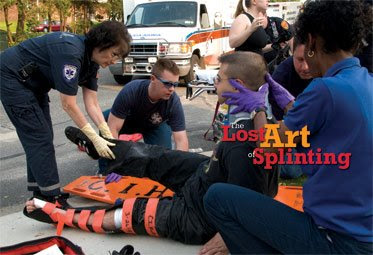...or 60 Minutes of Pyrite.
There is no "Golden Hour". There. I said it. Despite the fact that R. Adams Cowley, the BabyDaddy of modern emergent trauma care, made claims to the contrary.
Nosuh."There is a golden hour between life and death. If you are critically injured you have less than 60 minutes to survive. You might not die right then; it maybe three days or two weeks later -- but something has happened in your body that is irreparable."[1]
Realizing this subject has been touched upon many times before, I bring it up anyway. The previous authors are likely more suited, and better versed than I am.
The late, great, Dr. R. Adams Cowley is credited with coming up with the concept of the Golden Hour. Dr. Cowley apparently first discussed this concept as a military surgeon during World War II. After years of research and discussion, the Army awarded Dr. Cowley $100,000 to study shock. Thus, the first clinical shock trauma unit in the Nation was born. The unit consisted of two beds, and then later, four. By 1960, staff was trained and equipment was in place. He then used the idea of the "Golden Hour" to convince other physicians to refer and transfer sick patients to his revolutionary "Death Lab".
The "Death Lab" grew in popularity, and effectiveness. In 1968 an arrangement was made with Maryland State Police to start using military helicopters to get patients to the shock trauma unit more quickly. The first medevac occurred in '69 after the opening of the Center for the Study of Trauma, a 32 bed unit.
There is no denying that Dr. R. Adams Crowley accomplished a LOT for the emergency medical community. Just about everything we know about Shock and Trauma can be directly, or indirectly traced back to the work of Dr. Cowley and his associates. Pre-Hospital care exists largely due to the efforts of this man (Maryland had the first statewide EMS system). No one can take that away from him.
He accomplished so much, based largely on an inaccurate theory, that was back up by outdated data.
The original data set Dr. Cowley used to suport his "Golden Hour" buzz-word was from a 1918 study, observing casualties of World War 1.
"In World War I, there was a real appreciation of the time factor between wounding and adequate shock treatment. If the patient was treated within one hour, the mortality was 10 percent. This increased markedly with time, so that after eight hours, the mortality rate was 75 percent."[2]The study reported the following mortality percentages:
1 hr 10 %
2 hr 11 %
3 hr 12 %
4 hr 33 %
5 hr 36 %
6 hr 41 %
8 hr 75 %
10 hr 75 %
2 hr 11 %
3 hr 12 %
4 hr 33 %
5 hr 36 %
6 hr 41 %
8 hr 75 %
10 hr 75 %
Even looking at these statistics 90 years later, I don't see a strong case for using them to support a "Golden Hour" Theory. But he did, and it worked. People still continue to talk about "The Golden Hour". The Main Stream Media is convinced THAT is what saves lives in Iraq and Afghanistan.
Strokes and Cardiac Emergencies are Time Sensitive. Everything else is outsides the bounds of a time limit. A casualty can die on impact, bleed out in the first five minutes, or have an obvious injury inconsistent with survival. A casualty can also receive a significant injury/insult, render self aid, and sit-and-wait. There are casualties that occur in austere environments that survive significant Trauma, despite the fact that definitive care is hours away.
There is no research to conclusively support the existence of the Golden Hour. It doesn't exist. The deceitful buzz-phrase served it's purpose, but it's time has passed. Please Stop teaching it. Or don't. Whatever.
2. (Santy, P. Marquis Moulinier, Da Shock Tramatique dans les blessures de Guerre, Analysis d'observations. Bull. Med. Soc. Chir., 1918, 44:205)







